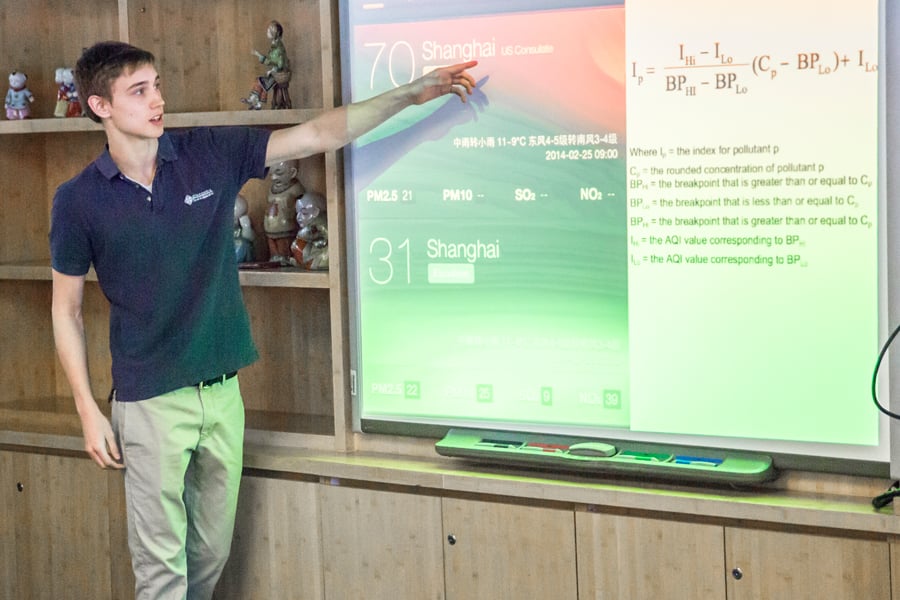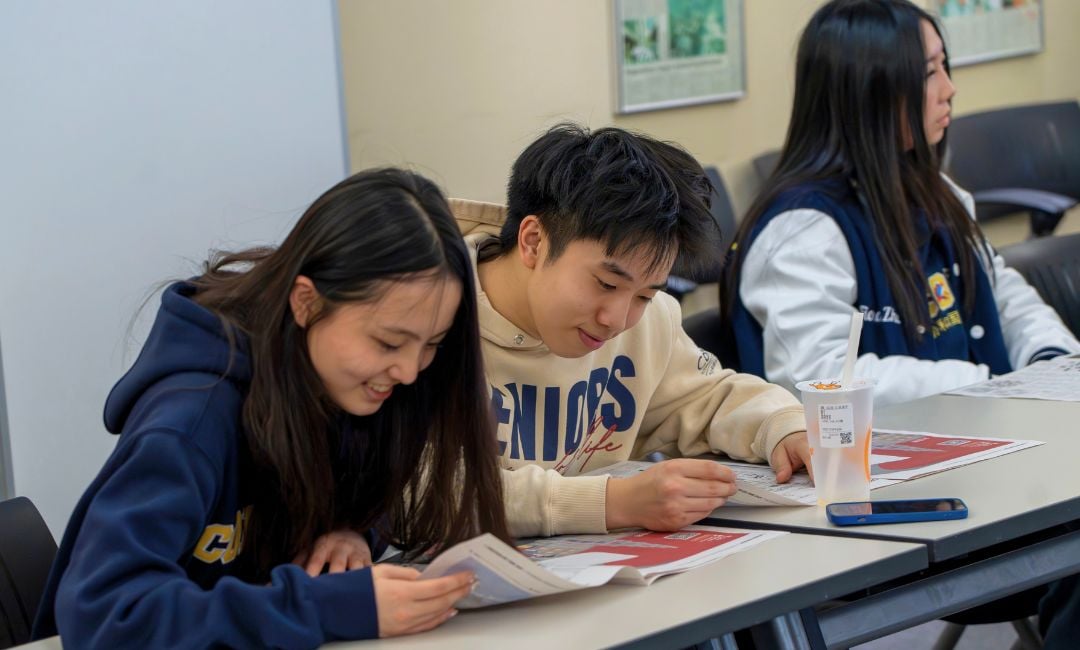Article submitted by Anne Love, a high school science teacher at Concordia International School Shanghai
Putting theory into practice to gather real-time air quality data
Though relatively stable, Shanghai’s air quality index has been known to spike at certain times throughout the year. In the midst of a city-wide “bad air scare,” Concordia’s high school principal approached me to get my AP Environmental Science (APES) students involved in gathering and analyzing meaningful data and educating our community about air quality. It was exciting to have the students undertake this research because it was a great opportunity for some authentic learning to occur.
The class’s foray into air quality safety got off to a prolific start, with the school providing the students handheld PM 2.5 monitors so they could start collecting the raw data. Adding these new numbers to what the school had already been collecting three times a day in ten different locations around campus, students began analyzing the large quantity of meaningful information they now had at their disposal.
Through this process of research and analysis, the students learned a great deal about air pollution and about what PM 2.5 actually means. They also learned how to clarify the confusion around the different reporting systems for the United States and China. Students waded through a number of sources to find their data and in doing so were able to develop a deeper understanding of this complex and relevant environmental issue.
Deeper learning leads to deeper understanding
In the midst of their research, the school completed installation of an upgrades air filtration system, which provided students with valuable before-and-after figures. Collating all of the data that had been gathered, they had to determine the type of data analytics they would need to show the improvements that had occurred. Additionally, they had to determine how to effectively communicate their findings to the stakeholders at the school.
The students presented their findings to a captivated audience of parents and teachers at a high school parent meeting. The parents and teachers were impressed with how knowledgeable the students were on the topic and how effectively they communicated the difficult content. News of the student’s work spread.
Using insight to better inform the community
“After learning about pollution and how it is measured” reflects one APES student, “we found it necessary to raise the awareness of accurate pollution measurement to the Concordia community. Our aim was to let the parents know the importance of using PM2.5 for pollution index, instead of AQI, and to inform them about the effectiveness of air filters that were currently installed around school. While preparing for the presentation, we ourselves had the chance to learn more about pollution measurement...We were glad to see that parents were enthusiastic about our presentation; they were taking notes and taking pictures of our slides….They were glad to see that the air filters were working effectively, and they were open to our idea of using PM2.5 value instead of AQI.”
While no one is a fan of the high AQI days in Shanghai, at least we know we can breathe easily at a school that cares about the safety of its community and encourages its faculty to look for creative and meaningful ways to broaden student knowledge and awareness, no matter how “hazy” the situation.







